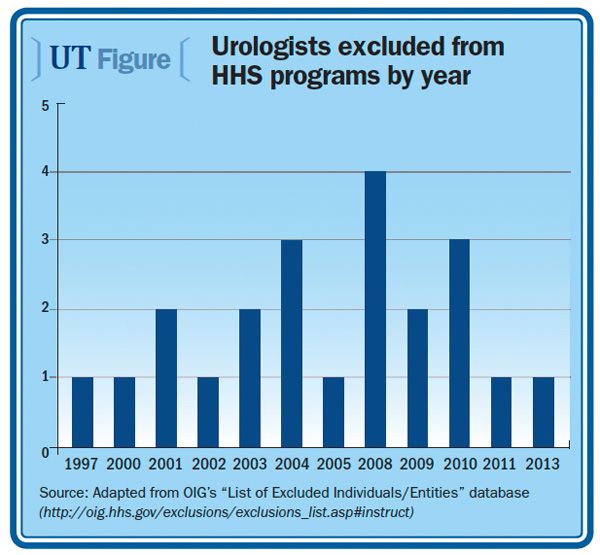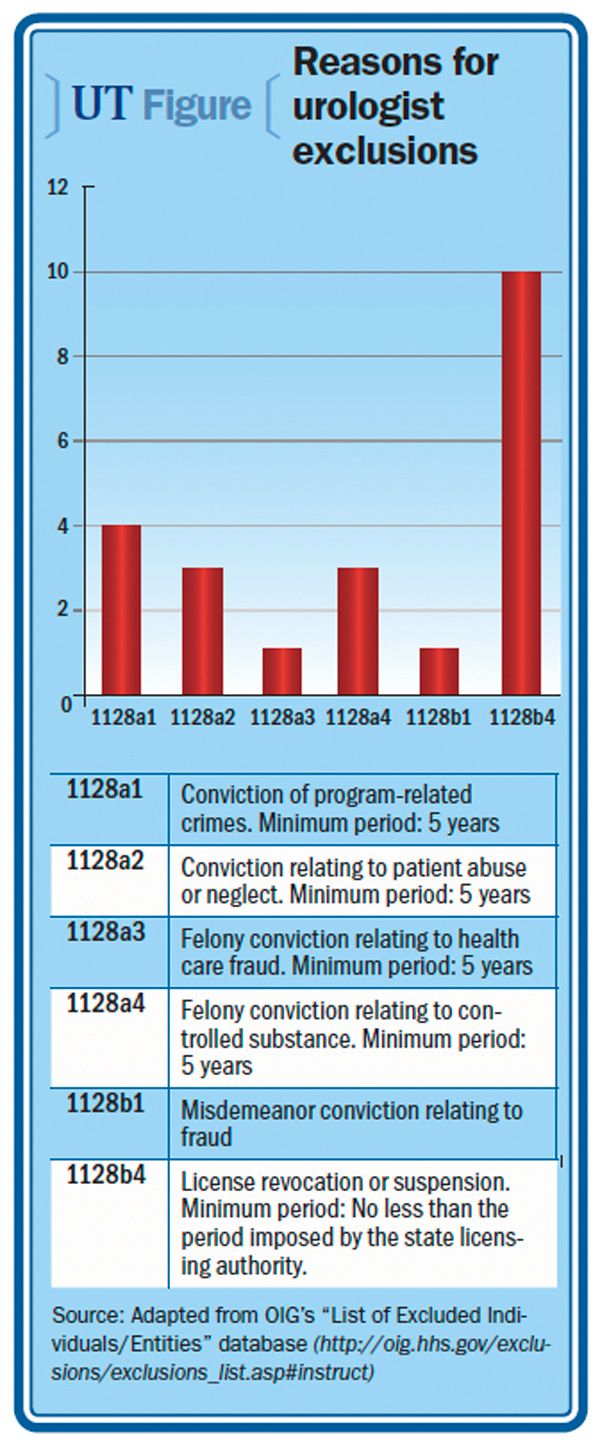Article
OIG focuses on provider status, admission criteria
The OIG recently released its work plan for 2014, and it is worth noting what is new and what is ongoing in the scope of the office’s intended activities for the coming year and beyond.

Dr. DowlingIn 2013, I published a series of articles on the Office of the Inspector General (OIG), its relevance to the practice of urology, and tips for mitigating any risk associated with the OIG’s auditing and investigative activities. The OIG recently released its work plan for 2014, and it is worth noting what is new and what is ongoing in the scope of the office’s intended activities for the coming year and beyond.
As a reminder, OIG is the investigative and enforcement arm of HHS and its programs, including but not limited to the Centers for Medicare & Medicaid Services (CMS) and the FDA. Its Office of Audit Services (OAS) and Office of Evaluation and Inspections are among several branches charged with maintaining the integrity of Health and Human Services programs and watching out for beneficiaries of those programs. According to its website (http://oig.hhs.gov), HHS’s OIG is the largest inspector general’s office in the federal government. The primary tools used by the OIG are forced exclusion from HHS programs, civil monetary penalties for violations including kickback and physician self-referral issues (472 in 2013), and criminal prosecutions of individuals and businesses for fraud and other egregious acts (960 in 2013).
According to OIG’s downloadable database, 5,500 physicians and 22 urologists have been excluded from federal programs by the OIG since 1977. The top two reasons for exclusions are licensing issues and conviction of program-related crimes, as shown in the figures.
Each year, the OIG publishes a summary of its activities and a work plan for the coming year. Here is a summary of topics in its “Work Plan for Fiscal Year 2014” that are of particular interest to urologists. The full work plan is available at http://ow.ly/vU2nv.

Continue to next page for more.
Provider status, admission criteria
Impact of provider-based status, Comparison of provider-based and free-standing clinics (new), and Outpatient evaluation and management services billed at the new patient rate (new). As hospitals and integrated delivery systems have acquired physician practices, including those of urologists, those entities have claimed “provider-based status.” This can result in increased payment for services to providers and increased coinsurance for beneficiaries. In these three sections of its work plan, the OIG announces its intention to both assess the impact of provider-based status and to carefully study the difference in payments made for the same service to hospitals claiming provider-based status versus free-standing clinics.
In addition, because hospitals are increasingly billing for outpatient evaluation and management (E&M) services with these clinic acquisitions, the OIG will focus on the potential for established patients to be billed at the higher “new patient” rate. Hospital-owned practices take note.
New inpatient admission criteria (new). Urologists who admit patients to the hospital should be aware of the “2-midnight rule,” which was recently clarified by CMS (http://ow.ly/w5BVr). The rule essentially redefines an “inpatient stay” as one in which a patient is required to need at least 2 nights of inpatient care and is designed to address inappropriate short inpatient stays that are overpaid compared to outpatient payments. The OIG, which reported these overpayments in the first place, will continue to assess the impact of the new criteria on CMS payments.

Continue to next page for more.
Necessity, E&M services, lab tests
Medical necessity of high-cost diagnostic radiology tests. The OIG continues, from previous years, its sharp focus on high-cost imaging studies (also see, “Medical imaging under OIG’s watchful eye in 2013"). Urologists need to be vigilant about documenting the rationale for ordering any high-cost imaging study, especially when aware that the patient has had a similar study recently and/or that order is referred to an in-office facility.
E&M services: Inappropriate payments. The OIG continues to examine inappropriately high payments for E&M services. As noted in the work plan, the context for this focus is “an increased frequency of medical records with identical documentation across services. Medicare requires providers to select the billing code for the service on the basis of the content of the service and to have documentation to support the level of service reported.” Cloned and bloated notes are easy to produce, perpetuate, and use to satisfy a coding engine, but CMS is interested in medical necessity to support the level of service.
Laboratory tests: Billing characteristics and questionable billing. The OIG remains focused on lab orders because they represent a large portion of total payments and are growing rapidly. Urologists should review how to properly document and sign an order and examine any work flows in their office regarding the perception of delegation of this authority to their clinical and clerical staff. Medicare only pays for tests ordered by a qualified provider.
ABNs, coding errors
Physicians and suppliers: Noncompliance with assignment rules and excessive billing of beneficiaries. Urologists should review existing policies in their practice regarding billing a beneficiary, especially advanced beneficiary notifications (ABNs). There are very few circumstances under which a physician who accepts assignment can bill a beneficiary for anything, and getting an ABN signed for a covered service-even unintentionally-is apparently common enough that the OIG continues its focus in this area.
Place-of-service coding errors. Remember that a service performed in a physician’s office generally results in a higher payment than when performed in a facility. Many urologists continue to have paper work flows to bill for services and need to periodically audit those processes to be sure the proper place of service is noted, especially for services like cystoscopy, prostate biopsy, and other procedures that can be performed in facility or non-facility places of service.
Bottom line: Urologists should be familiar with the areas of focus and scrutiny of oversight agencies like the OIG, analyze the relevance/risk to their own practice, and where appropriate take steps to mitigate or remediate any potential problems. While uncommon, urologists have been convicted of program-related crimes and/or excluded from participating in federal health programs, so the OIG’s efforts are not to be taken lightly.UT
Like this article? Check out these previous installments of "The Bottom Line":
Initiatives open up patient access to their health info
Master fee schedule: How it can help your practice
Meaningful use Stage 2 ramps up info sharing
Subscribe to Urology Times to get monthly news from the leading news source for urologists.





